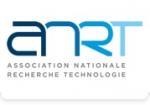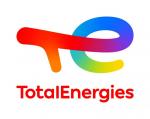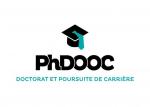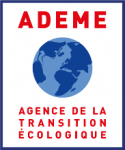Dynamic Tolerance Allocation: balancing Cost, Quality and Sustainability through surrogate modeling
| ABG-133901 | Sujet de Thèse | |
| 20/10/2025 | Autre financement public |
- Sciences de l’ingénieur
- Mathématiques
- Numérique
Description du sujet
Sustainable manufacturing has become a strategic focus as industries have begun exploring new ways to use resources efficiently and to reduce energy consumption [1]. One way to achieve this is to repair, reuse and remanufacture products [2]. These R-Strategies however can be challenging as used products are unreliable in terms of material and geometric properties compared to components coming from the traditional supply chain. Within the trade-off between waste, reuse, scrap and productions cost companies face the challenge of implementing R-Strategies in a profitable way while ensuring product quality on par with linear production [3]. This is especially true for high-precision products like the hydrogen valve as an example.
The first challenge is to evaluate which components are suitable for reuse or remanufacturing [4]. This evaluation needs to be done in general but also component instance specific considering potential assembly strategies between used and new components. A prerequisite in this context is a deep understanding of the product function given a specific set of components. The tight tolerances increase the overall complexity of this task calling for new methods of tolerancing on a component individual level. Dynamic tolerancing can stretch the small solution space for potential reuse or remanufacturing strategies of individual components [5].
With the convergence of advanced technologies and new data analytics, it could be possible to provide a real time feedback for adaptive product developing, by considering tolerance allocation as key element, leading for improved manufacturing efficiency and reduced scrap rated by integrating reusing principles [6] [7]. In the domain of precision manufacturing technology, traditional tolerance optimization models that only consider cost and quality can no longer meet the requirements when used components come into play [8]. In addition, the issue of optimizing energy consumption in the manufacturing process is not examined. Therefore, A trade-off between cost, quality, energy and material consumption, aims to better meet the requirements and increase the sustainability. A selection of hydrogen valves, spanning both new and reused or remanufactured components, is measured thoroughly before and after remanufacturing operations to create a dataset representing various potential production scenarios.
Main objective:
Simulation models will be developed predicting how different tolerance settings affect the valve's performance and manufacturing efficiency. This model differentiates individual components and considers their individual properties. A statistical model will be employed analyzing production variability and inform tolerance decision rules. By incorporating reuse rates and energy costs into the surrogate models, an optimization process is assured accounting for both economic and environmental considerations, ultimately reducing waste and lowering production expenses. The main objective of this PhD thesis is to develop new tolerance allocation approaches, balancing production cost, quality and sustainability. These approaches will predict the impacts of manufacturing imprecisions and the resources selection on the functional fulfilment of the hydrogen valve.
Tasks:
- Comprehensive analysis of tolerance allocation approaches based on literature review – main focus to surrogate modeling-based approaches.
- Assessment of key indicators of the relevance of a tolerance (reuse rate, scrap rate, manufacturing cost, inspection cost, energy consumption, materials, etc.) – These key indicators are the objective functions to be optimized simultaneously
- Mathematical formulation of tolerance-cost models, subject to system energy and materials requirements and design parameters requirements, develop cost assessment techniques of the resource’s consumption reduction and identify the design space of product parameters based on optimization modelling, balancing cost, quality, energy and materials consumption- assessment of the robustness of the solutions.
- Adaptive pairing strategy for assembly simulation based on inventory/available components and their condition
- Implementation and validation of developed approaches on test case - Hydrogen valve
References:
[1] V. M. Scharmer et al., ‘Sustainable Manufacturing: A Review and Framework Derivation’, Sustainability, vol. 16, no. 1, p. 119, 2023, doi: 10.3390/su16010119.
[2] K. Khor and Z. Udin, ‘Impact of Reverse Logistics Product Disposition towards Business Performance in Malaysian E&E Companies’, Journal of Supply Chain and Customer Relationship Management, pp. 1–19, 2012, doi: 10.5171/2012.699469.
[3] T. Tolio et al., ‘Design, management and control of demanufacturing and remanufacturing systems’, CIRP Annals, vol. 66, no. 2, pp. 585–609, 2017, doi: 10.1016/j.cirp.2017.05.001.
[4] Y. A. Alamerew and D. Brissaud, ‘Circular economy assessment tool for end of life product recovery strategies’, Jnl Remanufactur, vol. 9, no. 3, pp. 169–185, Oct. 2019, doi: 10.1007/s13243-018-0064-8.
[5] D. Gauder, J. Gölz, N. Jung, and G. Lanza, ‘Development of an adaptive quality control loop in micro-production using machine learning, analytical gear simulation, and inline focus variation metrology for zero defect manufacturing’, Computers in Industry, vol. 144, p. 103799, 2023.
[6] A. Khezri, V. Schiller, L. Homri, A. Etienne, J.-Y. Dantan, and G. Lanza, ‘Development and analysis of a holistic function-driven adaptive assembly strategy applied to micro gears’, Journal of Manufacturing Systems, vol. 69, pp. 48–63, 2023.
[7] G. Lanza, B. Haefner, and A. Kraemer, ‘Optimization of selective assembly and adaptive manufacturing by means of cyber-physical system based matching’, CIRP Annals, vol. 64, no. 1, pp. 399–402, 2015.
[8] L. Homri, M. R. Mirafzal, and J. Y. Dantan, ‘A new tolerance allocation approach based on decision tree and Monte Carlo simulation’, CIRP Annals, vol. 72, no. 1, pp. 105–108, 2023.
Prise de fonction :
Nature du financement
Précisions sur le financement
Présentation établissement et labo d'accueil
The PhD position will be carried out within the LCFC laboratory (Laboratoire de Conception, Fabrication, Commande) of Arts et Metiers Institute of Technology (ENSAM). It is part of the ANR (Agence National de Recherche) H2-TACTICS, developed in collaboration with the wbk Institute of Production Science of the Karlsruhe Institute of Technology (KIT). Regular exchanges and a long-stay (6 months) at wbk-KIT are expected.
Site web :
Intitulé du doctorat
Pays d'obtention du doctorat
Etablissement délivrant le doctorat
Ecole doctorale
Profil du candidat
The candidate should have:
- A Master’s degree (Bac +5) in Industrial or mechanical Engineering, Applied Mathematics, or an equivalent discipline.
- Strong background on mathematical modelling, machine learning, optimization.
- Good knowledge and programming skills in Python.
- The application should include a statement of research interests and a CV with two names and contact information of two referees.
- Have exceptional written and verbal communication skills, in English.
Vous avez déjà un compte ?
Nouvel utilisateur ?
Vous souhaitez recevoir nos infolettres ?
Découvrez nos adhérents
 CASDEN
CASDEN  Institut Sup'biotech de Paris
Institut Sup'biotech de Paris  ANRT
ANRT  Nokia Bell Labs France
Nokia Bell Labs France  Généthon
Généthon  TotalEnergies
TotalEnergies  PhDOOC
PhDOOC  ASNR - Autorité de sûreté nucléaire et de radioprotection - Siège
ASNR - Autorité de sûreté nucléaire et de radioprotection - Siège  MabDesign
MabDesign  ADEME
ADEME  MabDesign
MabDesign  CESI
CESI  Ifremer
Ifremer  ONERA - The French Aerospace Lab
ONERA - The French Aerospace Lab  Aérocentre, Pôle d'excellence régional
Aérocentre, Pôle d'excellence régional  Laboratoire National de Métrologie et d'Essais - LNE
Laboratoire National de Métrologie et d'Essais - LNE  Tecknowmetrix
Tecknowmetrix  Groupe AFNOR - Association française de normalisation
Groupe AFNOR - Association française de normalisation  SUEZ
SUEZ

